Somatic hip openers are gentle movements that help relax tight hips, improve flexibility, and increase body awareness. These exercises come from somatic practices, which focus on slow, mindful movement to release tension and retrain the body.
The idea of somatic movement started in the 1900s with teachers like Thomas Hanna and Moshe Feldenkrais, who studied how movement and the nervous system work together for healing. Practicing somatic hip openers can help you feel more relaxed, move more easily, and improve your posture in daily life.
| Topic | Details |
|---|---|
| What It Does | Helps relax tight hips, improve flexibility, and increase body awareness. |
| How It Works | Uses slow, gentle movements to release tension and retrain the body. |
| Time Needed | 10–20 minutes per session for best results. |
| How It Helps | Can reduce muscle tightness by up to 30% and improve movement. |
| Why Hips Get Tight | Too much sitting, stress, past injuries, or doing the same movements often. |
| Main Benefits | Better posture, less back pain, easier movement, and more relaxation. |
| Who Can Do It? | Anyone, especially people with stiff hips, pain, or limited movement. |
| Where It Comes From | Created in the 1900s by teachers like Thomas Hanna and Moshe Feldenkrais. |
| Best Way to Practice | Move slowly, focus on how your body feels, and don’t force stretches. |
| Good to Combine With | Yoga, breathing exercises, meditation, and walking mindfully. |
Easy Step-by-Step Guide of Somatic Exercise for Hips
A simple guide to somatic hip openers with easy steps to follow. Helps relax tight hips and move more freely.
1. Trimurti Mudra (Hand Gesture for Relaxing)
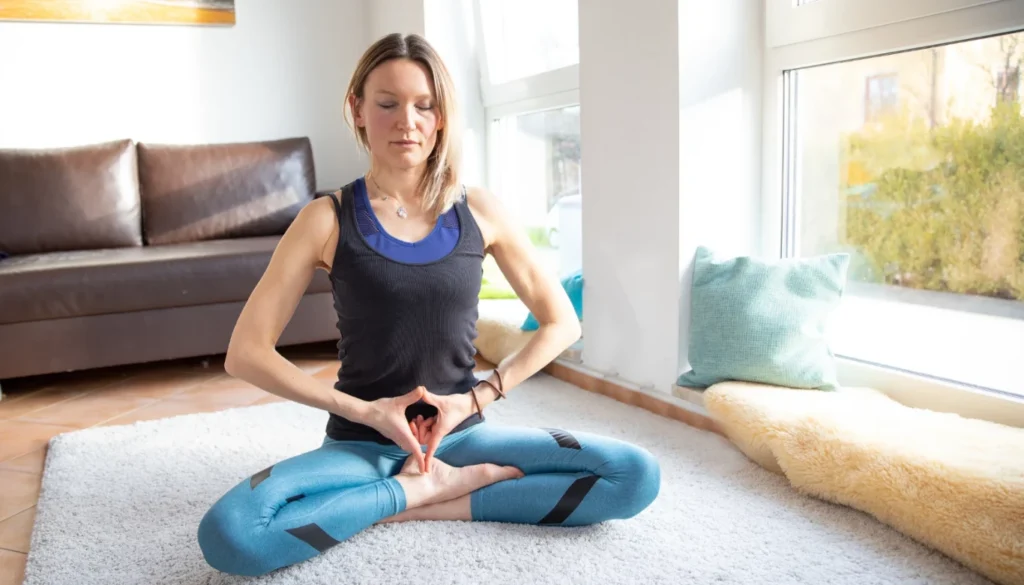
What it does: Helps you feel calm and connected to your body.
How to do it:
- Sit or lie down in a comfortable position.
- Place your hands on your lower belly.
- Touch your thumbs and index fingers together to make a small triangle.
- Take slow, deep breaths and relax.
- Stay here for a few breaths and feel at peace.
2. Somatic External Hip Rotation
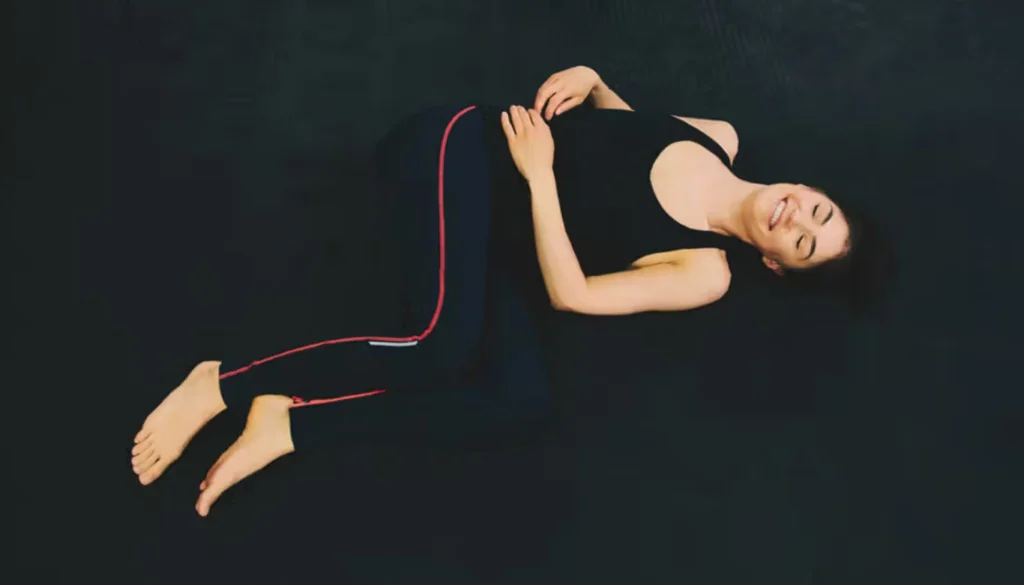
What it does: Loosens tight hips and improves movement.
How to do it:
- Lie on your side with your knees bent.
- Keep your feet touching each other.
- Lift your top knee slowly while keeping your feet together.
- Lower your knee back down.
- Do this three times, moving slowly and gently.
3. Somatic Internal Hip Rotation
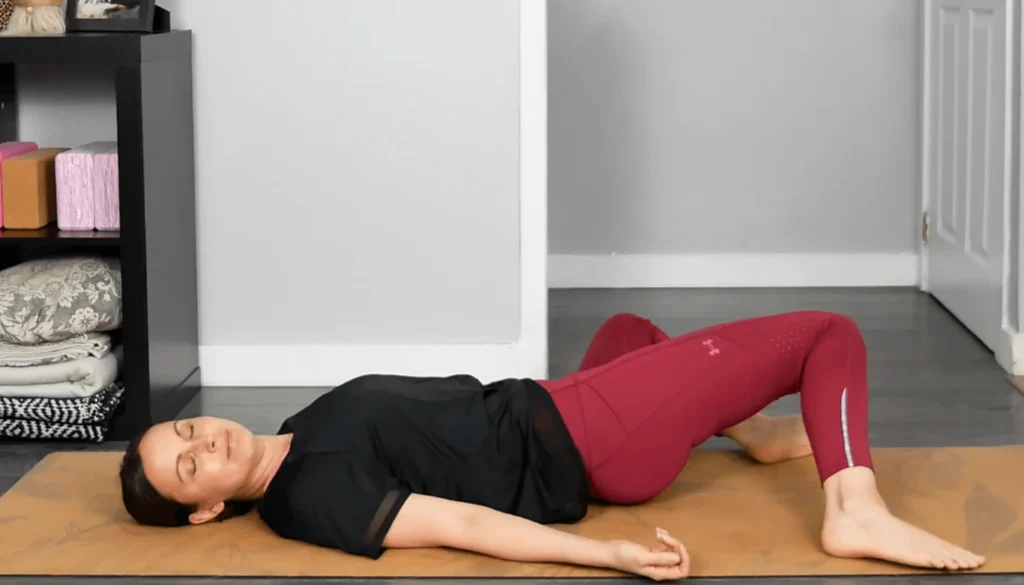
What it does: Helps hips feel free and move better.
How to do it:
- Stay in the same side-lying position.
- Keep your knees together.
- Lift your top foot while keeping your knee down.
- Lower your foot back down.
- Do this three times, breathing slowly.
4. Somatic Leg Lifts
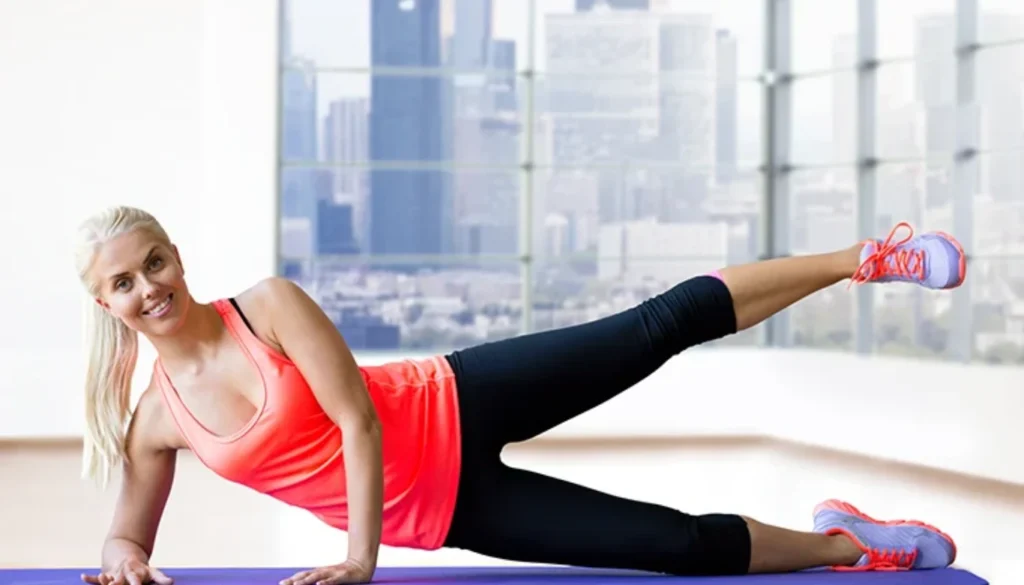
What it does: Makes your hips and legs stronger.
How to do it:
- Stay lying on your side.
- Keep your bottom leg bent for support.
- Lift your top leg a little while keeping the knee bent.
- Lower your leg back down slowly.
- Do this three times, moving smoothly.
5. Somatic Hip Forward & Back
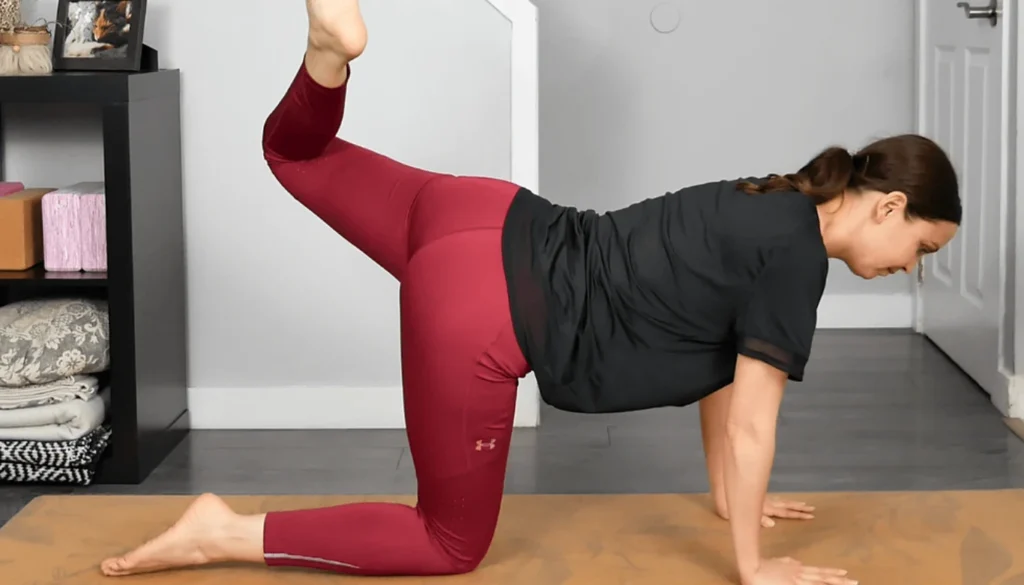
What it does: Loosens tight hips and lower back.
How to do it:
- Stay in the same side-lying position.
- Move your top hip a little forward.
- Then, move it a little back.
- Keep your knee bent and move slowly.
- Do this three times, breathing softly.
6. Thread the Needle (Hip Stretch)
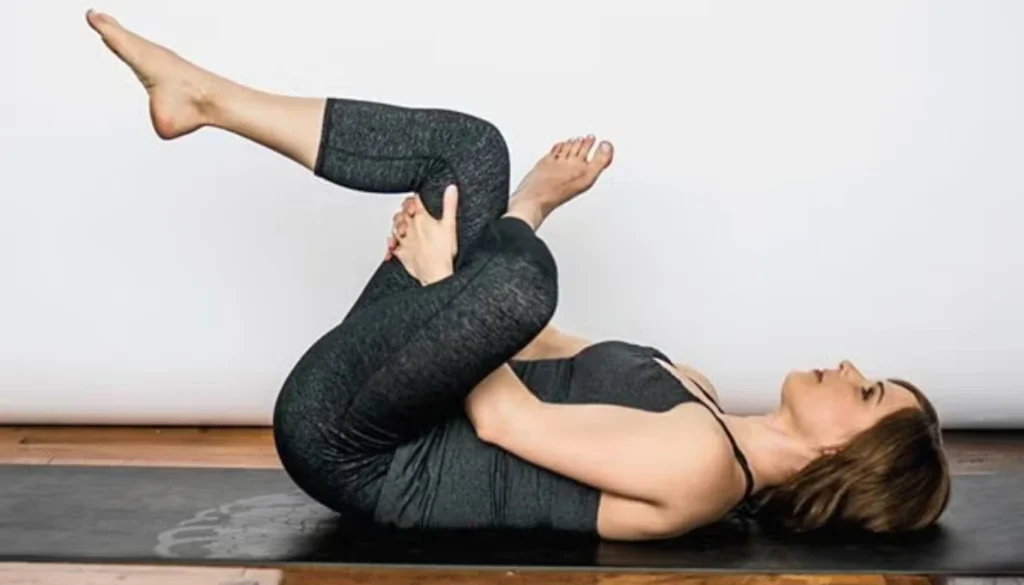
What it does: Loosens tight hips and lower back.
How to do it:
- Lie on your back with your knees bent.
- Put one ankle on top of the other knee.
- Hold your back thigh with both hands.
- Gently pull your leg toward your chest.
- Hold for a few breaths, then switch sides.
7. Ardha Ananda Balasana (Half Happy Baby Pose)
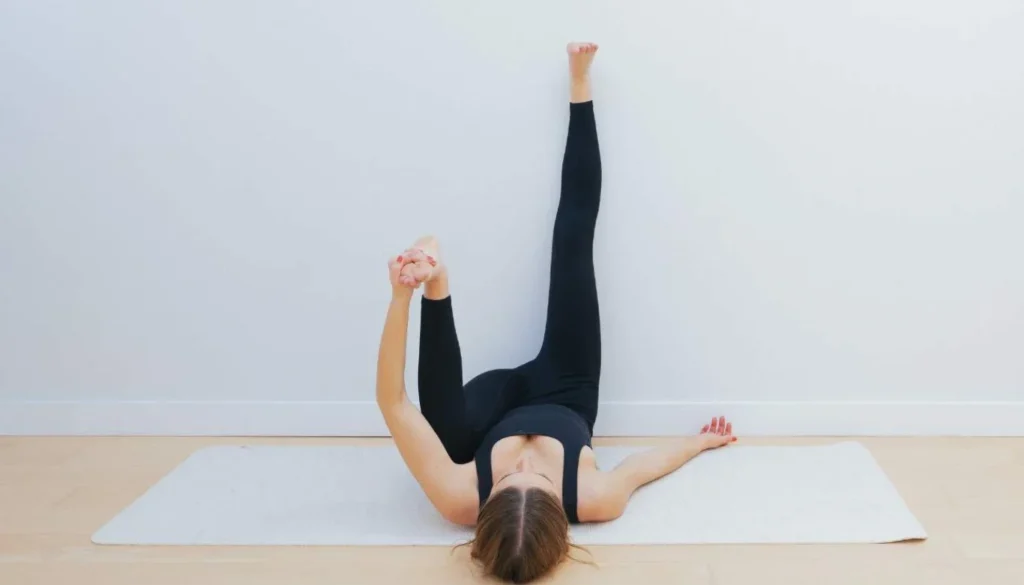
What it does: Stretches your hips and lower back.
How to do it:
- Lie on your back.
- Bring one knee toward your chest.
- Hold the outside of your foot with your hand.
- Keep the other leg relaxed on the floor.
- Gently pull your knee toward your side.
- Hold for a few breaths, then switch sides.
8. Reclining Pyramid (Leg Stretch)
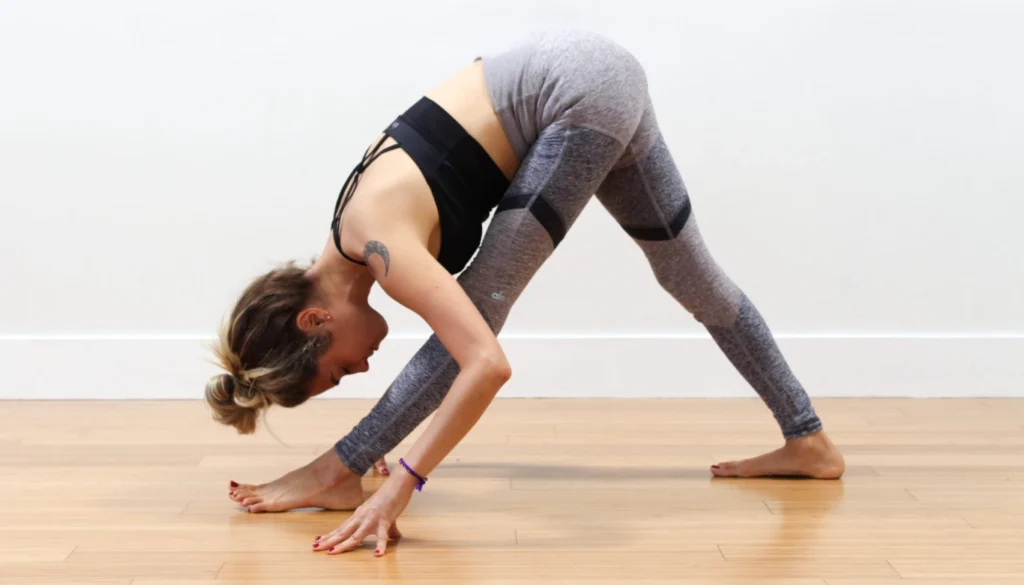
What it does: Stretches the back of your leg.
How to do it:
- Lie on your back with your knees bent.
- Lift one leg straight up.
- Hold the back of your thigh or calf with both hands.
- Keep the other leg bent or straight, whatever feels good.
- Hold for a few breaths, then switch sides.
9. Elbow Cat/Cow (Back Stretch)
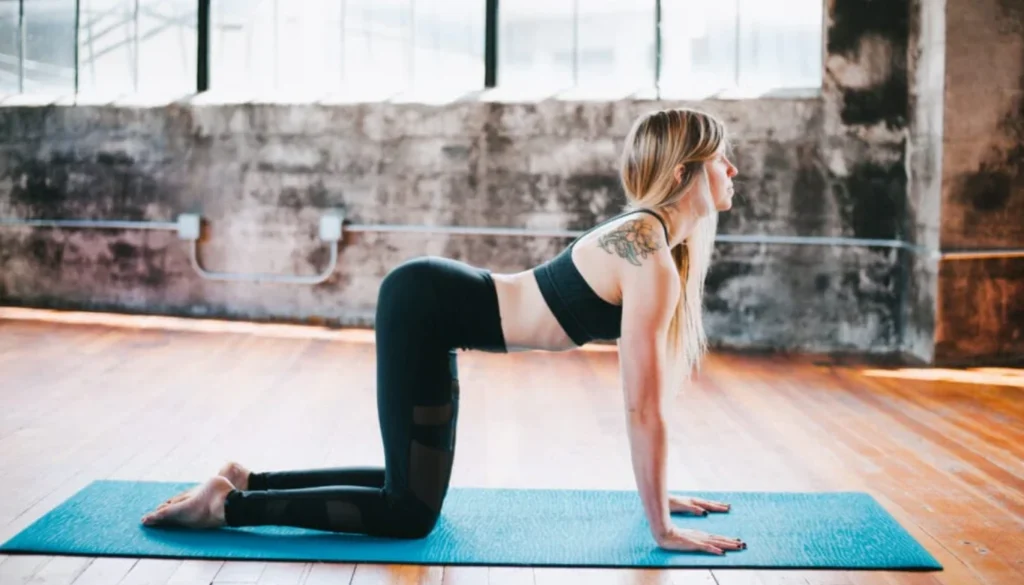
What it does: Makes your back feel loose and free.
How to do it:
- Lie on your stomach with elbows under your shoulders.
- Inhale, lift your chest a little, and look up.
- Exhale, tuck your chin, and round your back.
- Move slowly between these two positions.
- Repeat a few times, breathing deeply.
10. Malasana (Deep Squat)
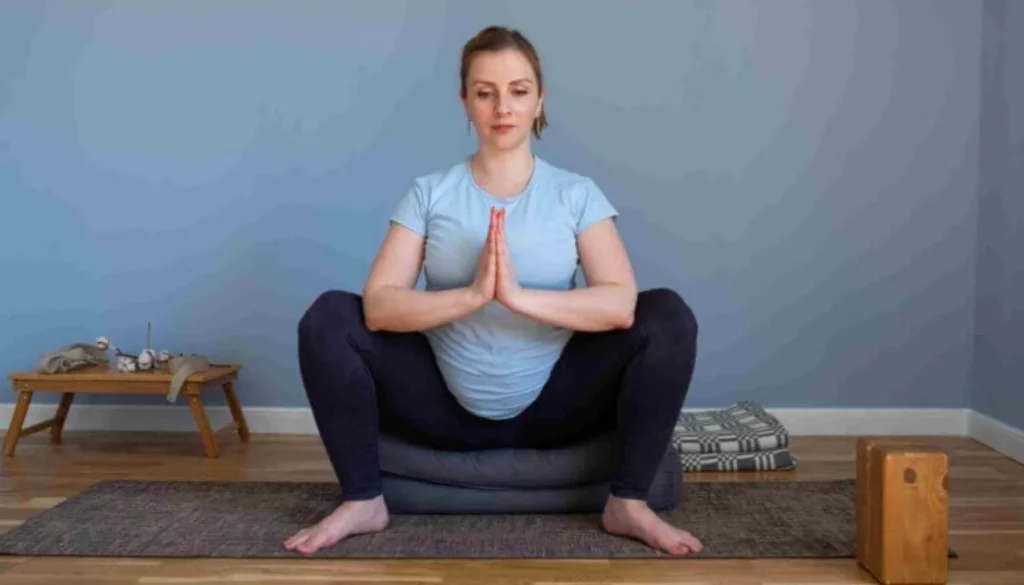
What it does: Stretches your hips, ankles, and lower back.
How to do it:
- Stand with your feet wide apart.
- Bend your knees and lower into a deep squat.
- Keep your heels on the floor if you can.
- Put your hands together in front of your chest.
- Press your elbows against your knees for balance.
- Hold for a few breaths, then slowly stand up.
11. Uttanasana (Bend Forward Pose)
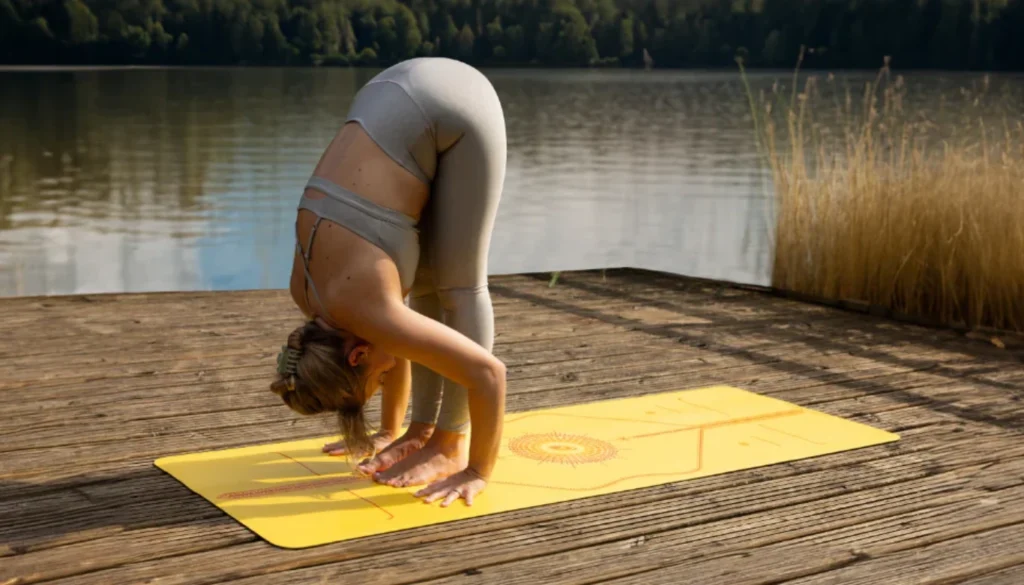
What it does: Stretches your legs and back.
How to do it:
- Stand up straight.
- Slowly bend forward from your hips.
- Let your hands touch the floor or rest on a block.
- Relax your head and neck.
- Breathe and hold for a few seconds, then stand up slowly.
12. Crescent Moon Lunge
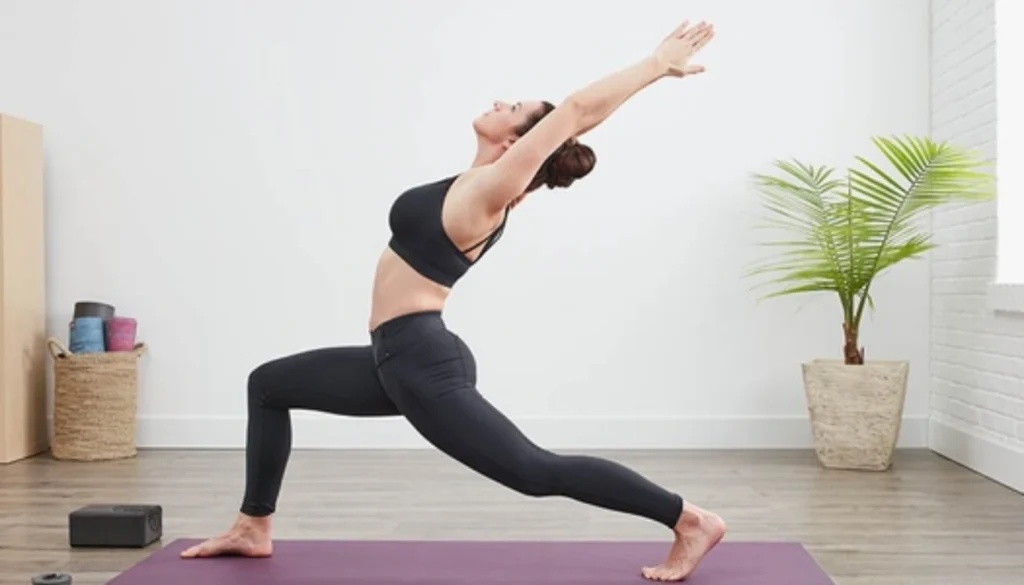
What it does: Stretches your hips, legs, and back.
How to do it:
- Step one foot forward into a lunge (bend the front knee).
- Keep your back leg straight or slightly bent.
- Raise your arms above your head.
- Keep your chest open and look forward.
- Hold for a few breaths, then switch sides.
13. Upright Lunge
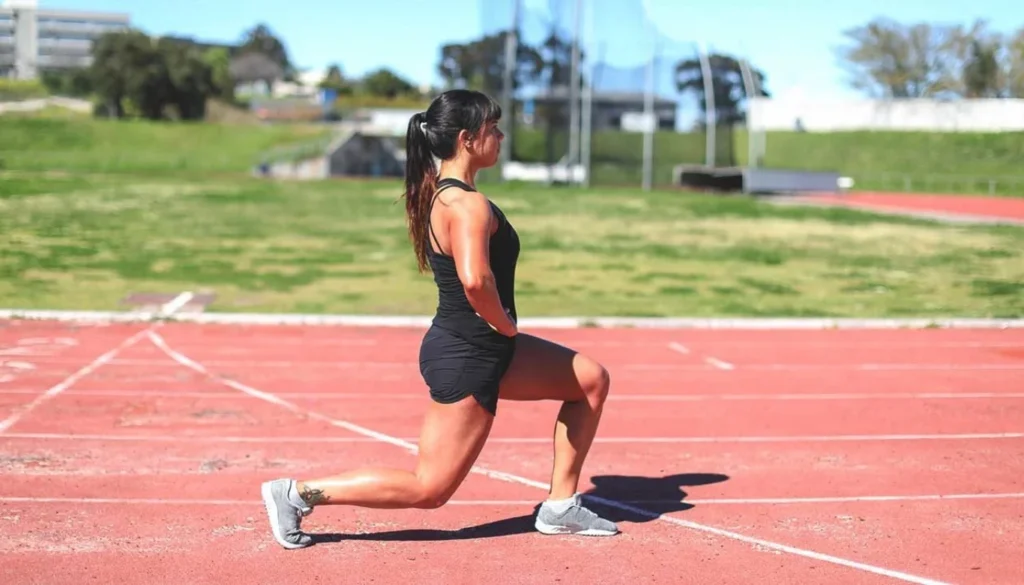
What it does: Makes your legs strong and helps with balance.
How to do it:
- Step one foot forward and bend your knee.
- Keep your back leg straight.
- Put your hands on your hips or lift them up.
- Keep your back straight.
- Hold for a few breaths, then switch sides.
14. Downward-Facing Dog (Adho Mukha Svanasana)
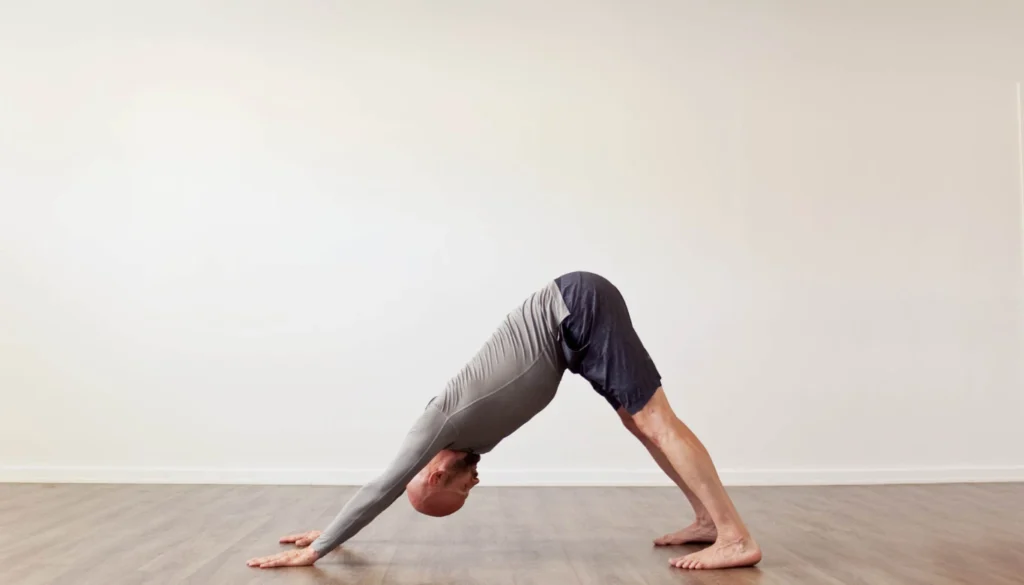
What it does: Stretches your whole body and makes you strong.
How to do it:
- Start on your hands and knees.
- Lift your hips up toward the ceiling.
- Straighten your arms and legs as much as you can.
- Press your heels toward the floor (it’s okay if they don’t touch).
- Hold for a few breaths, then come down.
15. Pigeon Pose (Eka Pada Rajakapotasana – with Blocks)
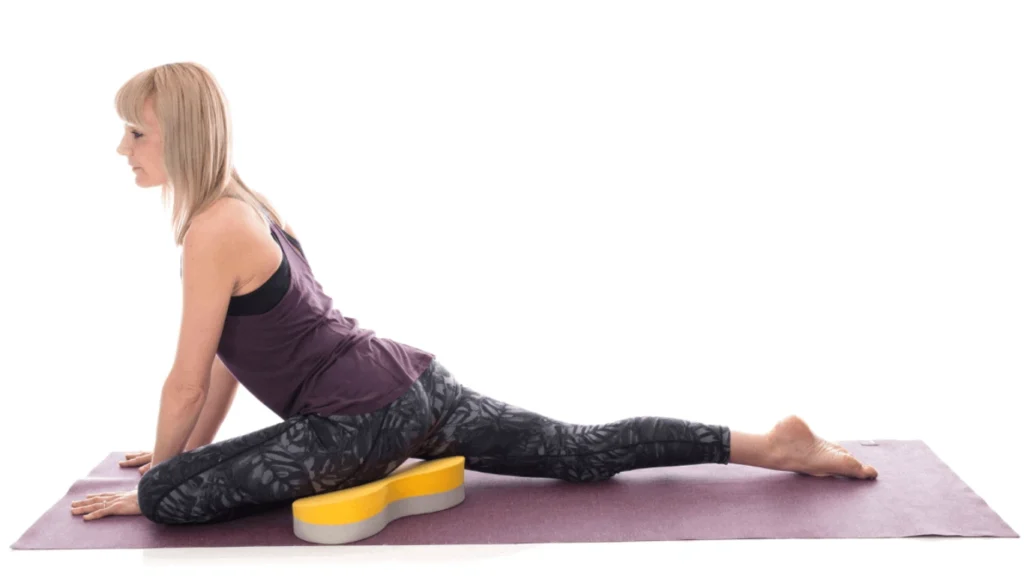
What it does: Opens your hips and stretches your legs.
How to do it:
- Start in a lunge (one foot forward, one back).
- Bring your front leg down across your mat.
- Stretch your back leg straight behind you.
- Put blocks under your hands for support.
- Hold for a few breaths, then switch sides.
16. Pigeon Pose (Eka Pada Rajakapotasana – Forward Bend)
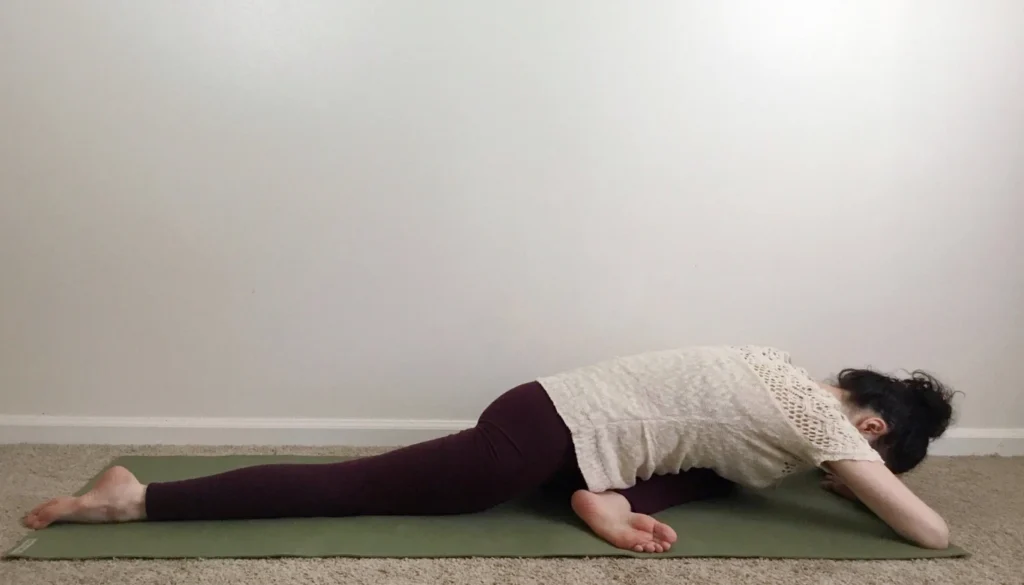
What it helps: Stretches hips and legs.
How to do it:
- Sit with one leg bent in front, the other stretched back.
- Keep your front leg as straight as you can.
- Bend forward and rest your head on the floor or arms.
- Relax and breathe.
- Stay for a few breaths, then switch legs.
17. Child’s Pose (Balasana – Wide Knees)
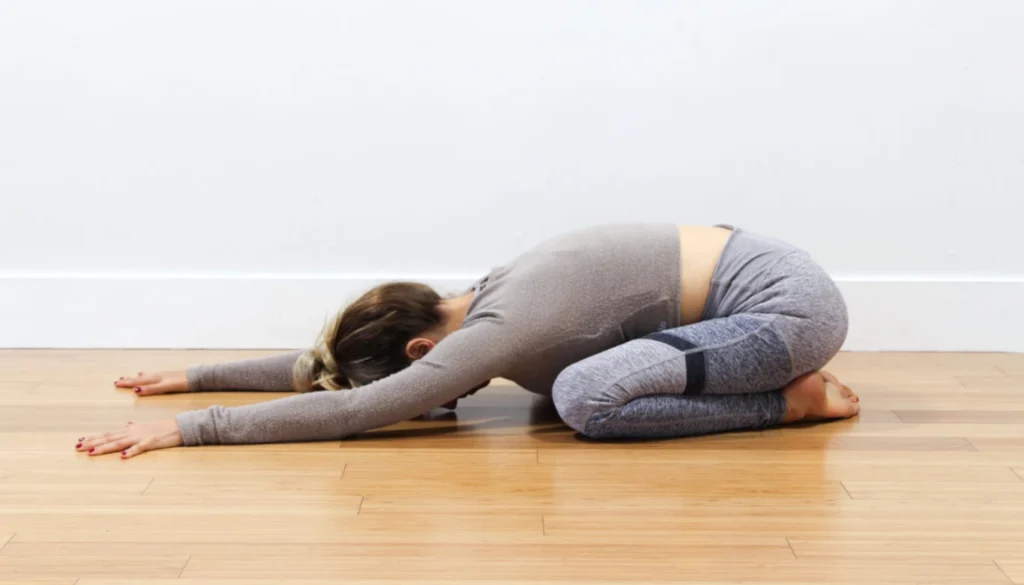
What it helps: Relaxes back and hips.
How to do it:
- Kneel with your knees wide apart.
- Sit back on your heels.
- Stretch your arms forward and rest your head on the floor.
- Breathe deeply and relax.
- Stay for a few breaths.
18. Bridge Pose (Setu Bandha – Four Ways)
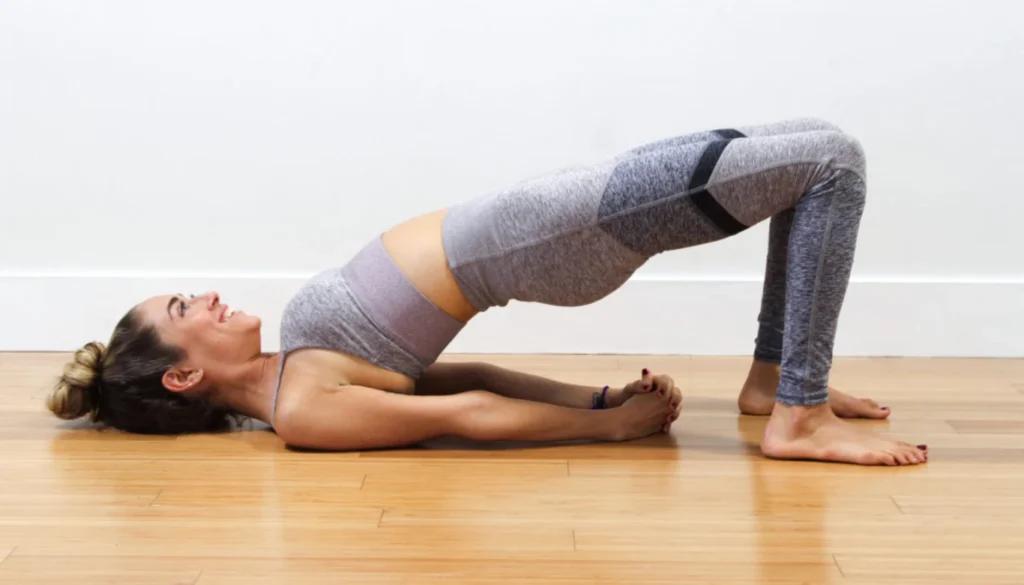
What it helps: Makes legs and back strong.
How to do it:
- Lie on your back with knees bent and feet on the floor.
- Keep feet and knees together or apart.
- Press your feet down and lift your hips.
- Keep arms relaxed or clasp them under your back.
- Stay for a few breaths, then lower down.
19. Supported Bridge (Salamba Setu Bandha)
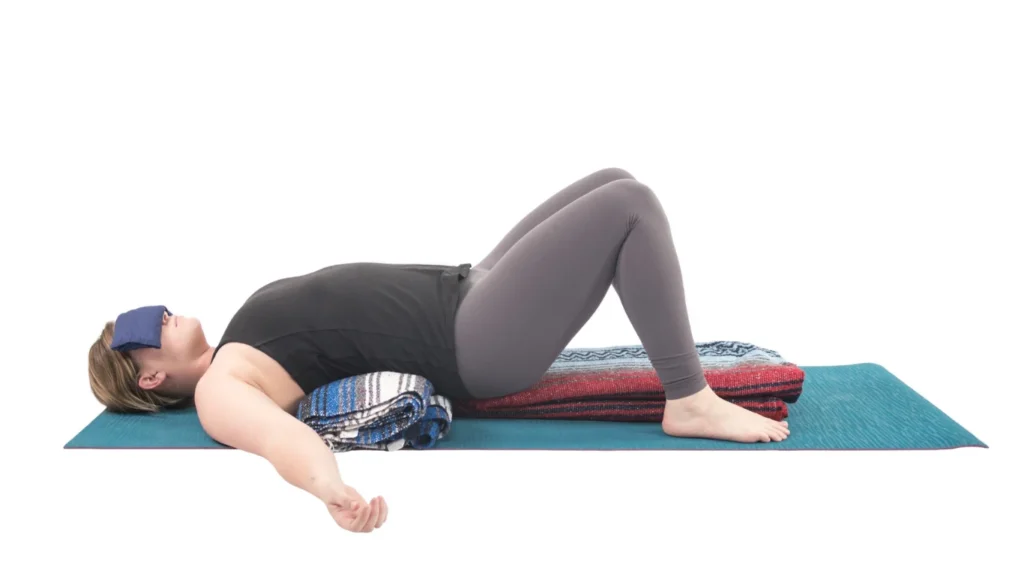
What it helps: Opens chest and relaxes lower back.
How to do it:
- Lie on your back with knees bent.
- Lift your hips up.
- Place a block or pillow under your lower back.
- Relax and breathe.
- Stay for a few breaths, then remove the block and lower down.
20. Reclining Cow Face Pose (Supta Gomukhasana)
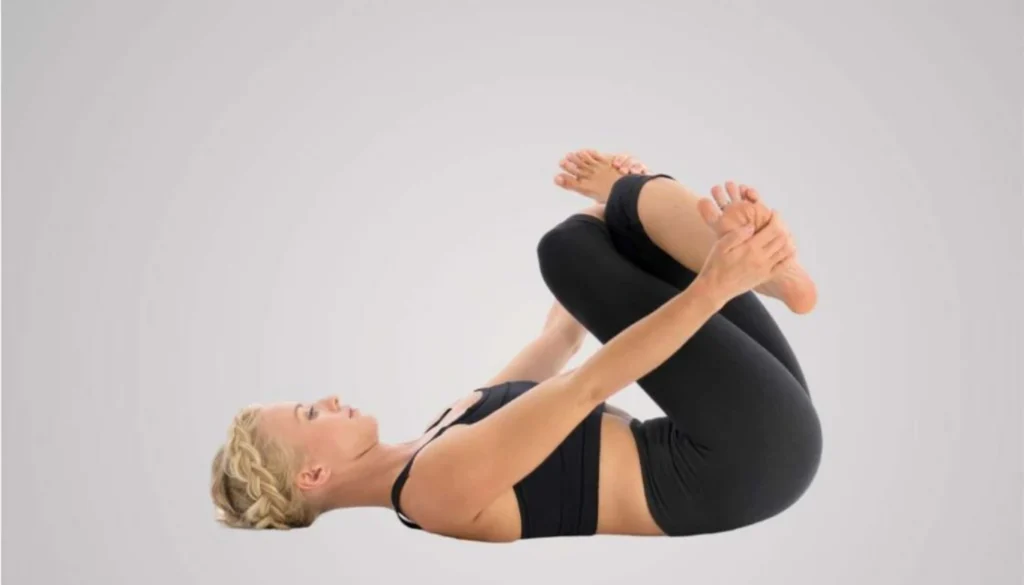
What it helps: Stretches legs and hips.
How to do it:
- Lie on your back.
- Cross one knee over the other.
- Hold your feet or ankles.
- Pull legs gently toward you.
- Stay for a few breaths, then switch legs.
21. Butterfly Pose (Baddha Konasana)
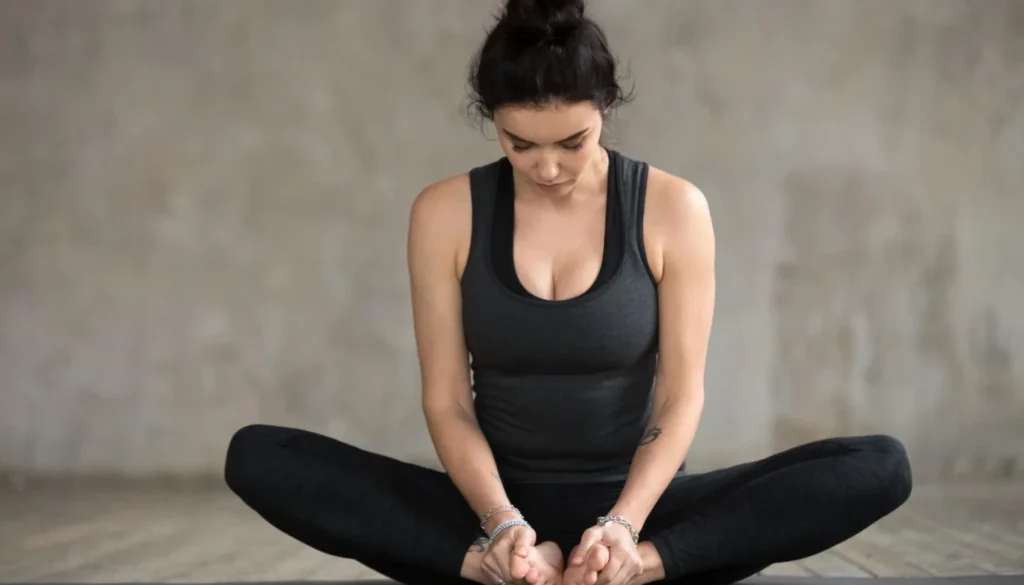
What it helps: Stretching hips and legs.
How to do it:
- Sit on the floor.
- Bring your feet together, knees open to the sides.
- Hold your feet with your hands.
- Sit up straight and relax.
- Breathe slowly.
22. Shell Hand Pose (Shanka Mudra)
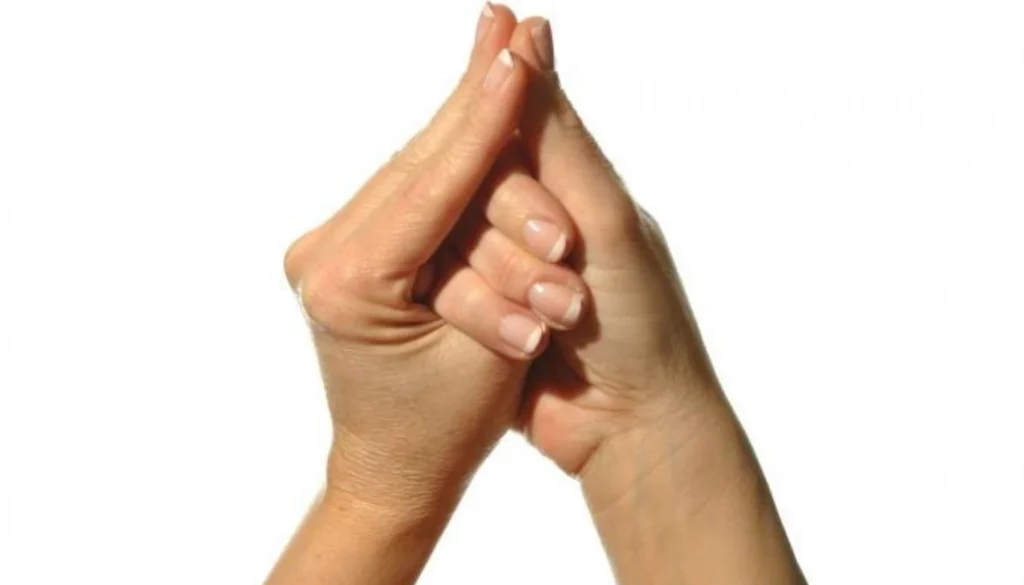
What it helps: Calming the mind.
How to do it:
- Wrap your left thumb inside your right palm.
- Touch your right thumb to your left index finger.
- Hold hands in front of your chest like a shell.
- Breathe slowly and relax.
23. Supported Child’s Pose (Salamba Balasana)
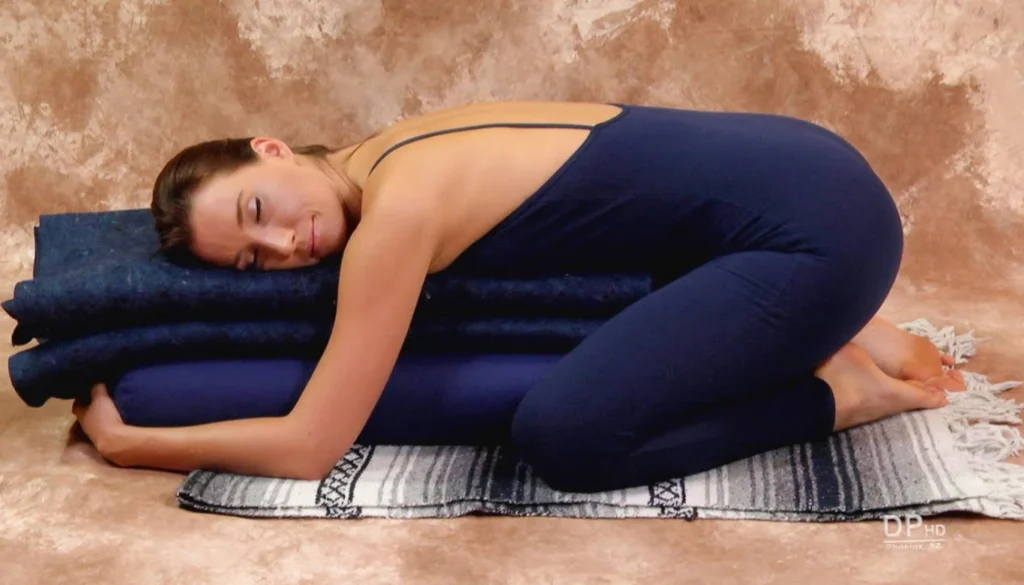
What it helps: Relaxing the back.
How to do it:
- Kneel on the floor.
- Put a pillow under your chest.
- Stretch your arms forward.
- Rest your head on the pillow.
- Breathe deeply.
24. Supported Frog Pose (Salamba Bhekasana)
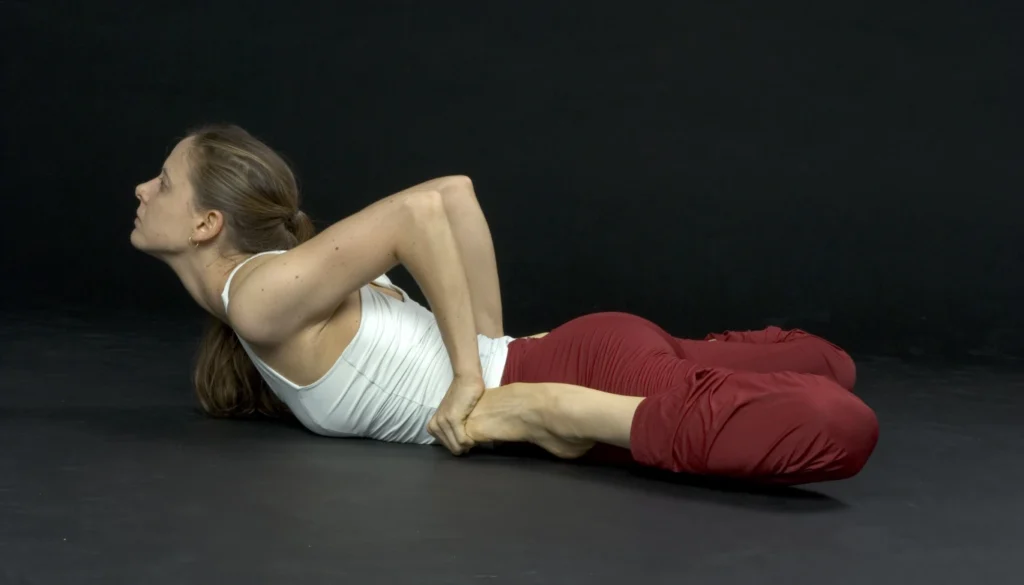
What it helps:: Stretching legs.
How to do it:
- Lie on your belly.
- Bend your knees, feet towards hips.
- Hold your feet with your hands.
- Lift your chest a little.
- Breathe and relax.
25. Resting Pose (Salamba Savasana)
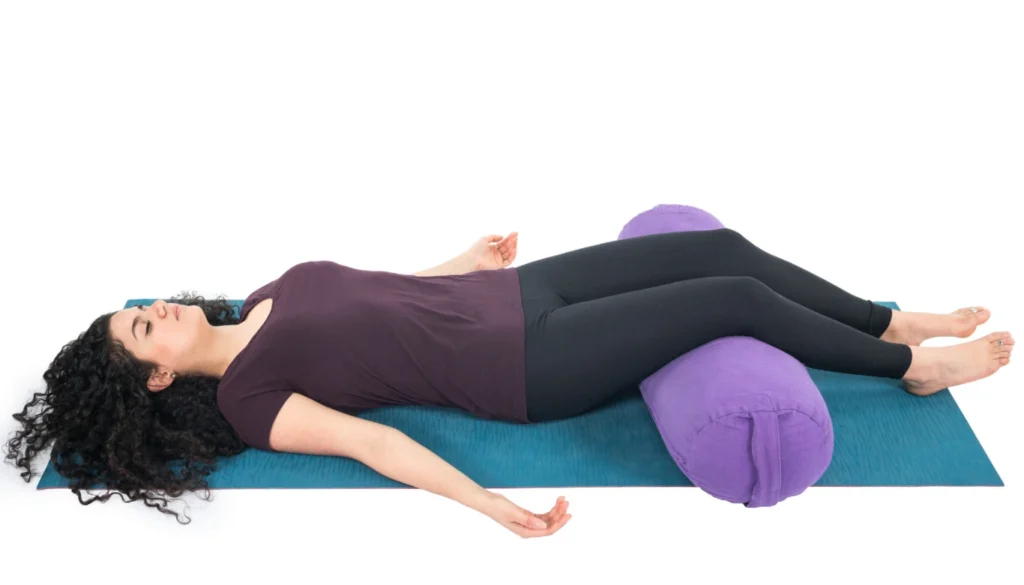
What it helps: Full body rest.
How to do it:
- Lie on your back.
- Put a pillow under your knees if needed.
- Rest arms at your sides, palms up.
- Close your eyes and breathe.
- Stay for a few minutes.
Conclusion:
Somatic hip release help your hips feel loose and relaxed. They reduce stiffness and make movement easier. These gentle exercises release tension from sitting, stress, or daily life. Moving slowly and mindfully helps you connect with your body. Somatic Yoga for weight loss also supports better movement and overall well-being.
With regular practice, you can reduce pain, improve flexibility, and feel more comfortable. These movements also help you relax and feel calm. Keep practicing, listen to your body, and enjoy healthy.
FAQs
What are somatic hip openers?
They are easy, slow movements that help your hips feel loose and relaxed. They also help reduce stiffness and pain.
Who can do somatic hip openers?
Anyone! They are safe for beginners, people with tight hips, and those who want to move better.
How often should I do them?
You can do them every day or a few times a week. Even 5–10 minutes can help.
Can they help with pain?
Yes! These movements can reduce hip and lower back pain by making your muscles relax.
Do I need special equipment?
No, but you can use pillows or blocks to make it more comfortable.

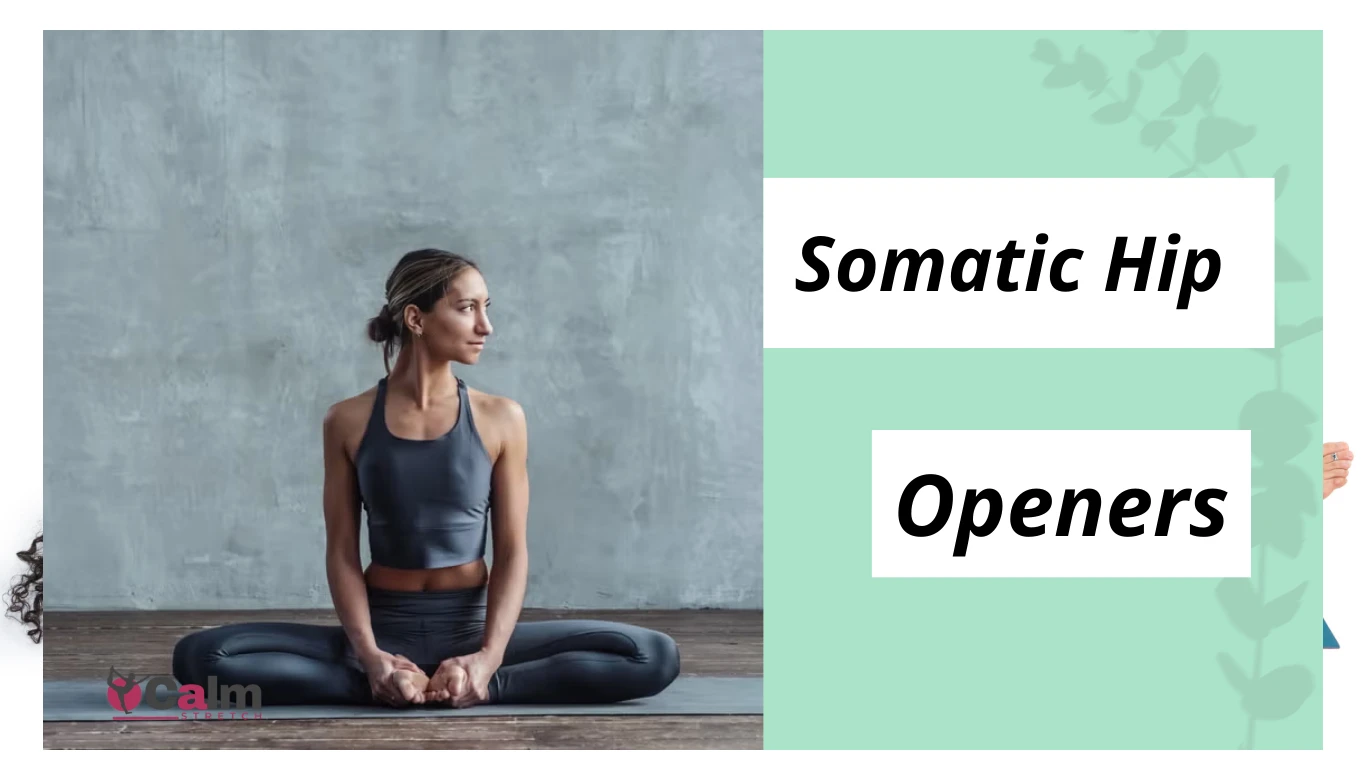
2 Responses
I love how it explains the benefits of releasing tension and improving flexibility in the hips. The connection between emotional release and physical movement is so important.
Thank you I’m glad you found the connection between emotional release and physical movement helpful. It’s amazing how somatic exercises can support both our body and mind. Hope you enjoy exploring these practices further.